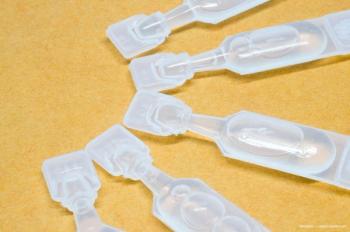
Weighing pros, cons of IOL implantation in pediatric cataract
IOL implantation was associated with more inflammation and slightly more visual obscuration in 120 children age 2 or younger undergoing bilateral cataract surgery. However, the rate of glaucoma was similar compared with an aphakic group.
Take-home message: IOL implantation was associated with more inflammation and slightly more visual obscuration in 120 children age 2 or younger undergoing bilateral cataract surgery. However, the rate of glaucoma was similar compared with an aphakic group.
By Vanessa Caceres; Reviewed by Abhay Vasavada, MS, FRCS
Ahmedabad, India-IOL implantation in children under the age of 2 does not always lead to a higher rate of glaucoma, but posterior synechiae can be more common, said Abhay Vasavada, MS, FRCS.
Pediatric cataract surgeons most frequently consider the safety associated with various treatments for pediatric cataract, said Dr. Vasavada, director, Iladevi Cataract and IOL Research Centre, Ahmedabad, India.
Sponsored:
Some studies, such as the Infant Aphakia Treatment Study, have examined this topic. Though investigators have focused on unilateral cataract, there is still a need to analyze safety and outcomes in bilateral cataract.
Aphakic glasses can work well, but patients and their families are seeking alternatives.
Blog:
“There’s nothing wrong with glasses, but now that lifestyles are changing, those glasses are becoming a handicap,” he said.
On the surface, it may seem that contact lenses would be another treatment option. However-contact lenses in many parts of the world are expensive and actually impractical-they need a lot of support, Dr. Vasavada said.
Accommodating IOLs:
For these reasons, more surgeons in centers outside of the United States are considering IOL implantation. There has been some hesitation because of concern about the development of glaucoma.
Taking a closer look
In his research, Dr. Vasavada wanted to take a closer look at outcomes and safety for the treatment of bilateral cataract in patients under the age of 2. The prospective, randomized, study analyzed results for up to 5 years and looked at complications.
The study included 60 eyes with hydrophobic single-piece IOL implantation and 60 eyes with aphakia. Dr. Vasavada performed all surgeries.
To help motivate parents and their children return for numerous follow-up exams, the office helped support their travel.
The study examined glaucoma (defined as an IOP of more than 21 mm Hg), visual obscuration, and inflammation (e.g., synechiae and cell deposits).
Related:
The rate of glaucoma in the aphakic group was 16.7% and 13.4% in the pseudophakic group. Visual axis obscuration was 6.3% in the aphakic group and 10% in the pseudophakic group. Posterior synechiae occurred in 10% of aphakic patients and 25% of pseudophakic patients. There were also some cell deposits in the pseudophakic group, but they disappeared after 6 months postoperatively.
The glaucoma rate between the two groups was essentially the same, Dr. Vasavada said. However, the difference in the rate of posterior synechiae was significant.
More glaucoma:
Abhay Vasavada, MS, FRCS
This article was adapted from Dr. Vasavada’s presentation at the 2015 meeting of the American Academy of Ophthalmology. He did not indicate any proprietary interest in the subject matter.
Newsletter
Don’t miss out—get Ophthalmology Times updates on the latest clinical advancements and expert interviews, straight to your inbox.



















































.png)


